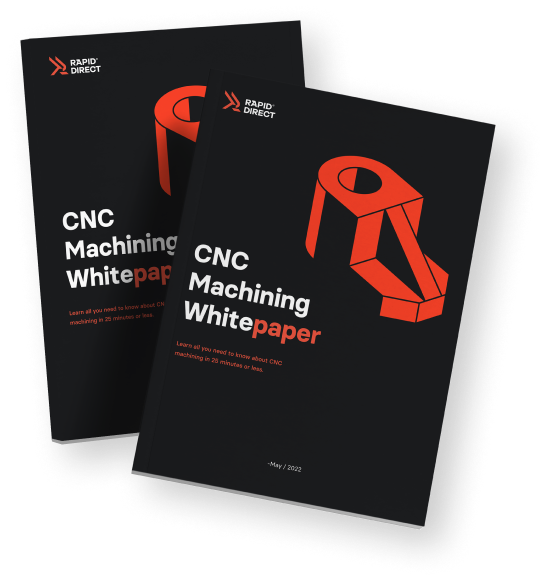CNC machining is inarguably the lifeblood of the manufacturing industry with applications such as aerospace, medical devices, and electronics. Choosing CNC machined components balances factors like material strength, machinability, and application-specific requirements. Advances in technology continually expand material options, making informed selection critical for optimal component performance and durability in these demanding industries.
In this article, we explore the world of CNC materials, focusing on how to choose the right ones for CNC machining. We’ll cover both popular and lesser-known options, offering insights into their unique properties and applications. This streamlined guide aims to enhance your understanding of machining materials without overwhelming you with excessive details.
How to Choose the Best CNC Machining Material
The availability of a wide range of materials for CNC machining gives engineers the freedom to choose the best option for their specific needs. It is essential to understand the various factors to consider before choosing machining materials for your projects. This will help you make informed decisions and ensure that your projects are successful.
Machining Environment
Considering the machining environment is important, as various materials respond uniquely to different conditions like cutting speed, tool material, and coolant use. Factors like temperature, humidity, and potential contaminants in the environment significantly influence the machining process and the final product’s quality.
For example, some materials may tend to chip or crack if the machining temperature gets too high, while others may experience excessive tool wear if the cutting speed is too high. Similarly, the use of certain coolants or lubricants may be necessary to reduce heat and friction during machining. However, these may not be compatible with certain materials and may lead to corrosion or other forms of damage.
Therefore, taking into account the machining environment can help improve productivity, reduce costs, and ensure the quality of the finished product.
Part Weight
It is essential to consider part weight to ensure cost-effectiveness, performance, and manufacturability. Heavier parts require more CNC materials, which can increase the cost of production. Additionally, heavier parts may require larger and more powerful CNC machines to manufacture, which increases costs and production time. Therefore, choosing a material with a lower density, such as aluminum or magnesium, can help reduce the weight of the part and lower production costs.
Besides, part weight can also affect the performance of the final product. For example, in aerospace applications, reducing the weight of a component can increase fuel efficiency and improve overall performance. In automotive applications, reducing weight can also improve fuel efficiency and increase acceleration and handling.
Heat Resistance
Heat resistance directly impacts the material’s ability to withstand high temperatures without experiencing significant deformation or damage. During processes like cutting, drilling, or milling, exposure to heating and cooling cycles can cause thermal expansion and warping in stock materials lacking sufficient heat resistance.
Choosing metals with good heat resistance can also help improve the machining process, reduce production costs, and allow for faster cutting speeds and deeper cuts. This brings shorter machining times and reduced wear on tools.
The selection of materials for CNC machining varies based on their heat resistance and the intended application of the final product. Metals like aluminum and copper are suitable for heat sinks and thermal management applications due to their good thermal conductivity. However, stainless steel and titanium are ideal for aerospace and medical applications due to their high melting points and corrosion resistance.
Electrical Conductivity and Magnetic Requirements
Electrical conductivity is a measure of a material’s ability to conduct electricity. Materials with high electrical conductivity, like copper and aluminum, are famous for their efficiency in dissipating heat. This aspect is crucial in machining metals, where heat generation can lead to warping or deformation. Using such conductive materials helps prevent these issues.
Magnetic properties also influence material choice in CNC machining. When working with ferromagnetic metals like iron, nickel, and cobalt, their strong magnetic fields can impact the cutting process. Conversely, non-magnetic options like titanium and stainless steel are popular, as they remain unaffected by magnetic fields, resulting in cleaner cuts.
Hardness
Machinability describes how easily a workpiece can be cut, drilled, or shaped by CNC cutting tools.
When too hard, it can be challenging to cut or shape, leading to excessive tool wear, breakage, or poor surface finishes. On the flip side, overly soft materials might deform or deflect under cutting forces, compromising dimensional accuracy or surface quality.
The hardness also influences the machining speed and efficiency, as harder substances may necessitate slower cutting speeds or more robust cutting tools. Thus, selecting a material with the right hardness is vital for high-quality, precision CNC machining.
Surface Finish
The surface finish affects the final machined product’s performance and appearance. For example, a part with a rough surface finish may experience more friction, which can lead to premature wear and failure. On the other hand, a part with a smooth surface finish will have less friction, resulting in improved performance and a longer lifespan. Additionally, the surface finish also plays a significant role in the aesthetics. A polished surface finish can improve the appearance of a part and make it more appealing to customers.
Therefore, it is essential to consider the surface finish requirements for the final product. Some materials are easier to machine to a smooth surface finish than others. For example, metals such as aluminum and brass are relatively easy to machine to a smooth finish. In contrast, plastics such as carbon fiber and fiberglass can be more challenging to machine, and achieving a smooth surface finish may require specialized tools and techniques.
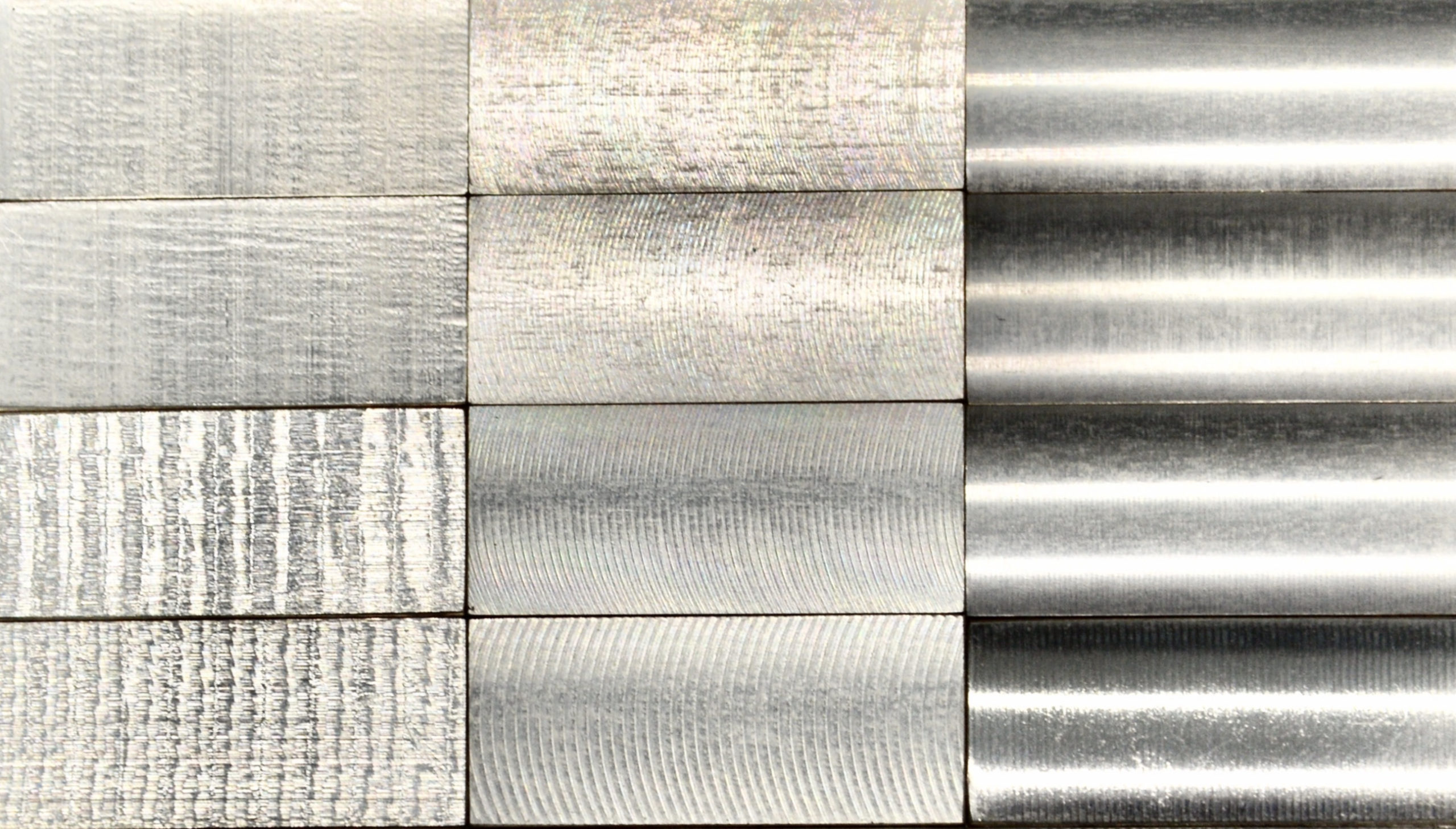
Aesthetics
If you plan a CNC machining project for a high-end retail product, aesthetics play a significant role. The chosen CNC machining material must offer visual appeal, featuring an attractive texture, color, and surface finish. It should also allow easy polishing, painting, or finishing to achieve the desired appearance.
Additionally, in industries such as automotive and aerospace, aesthetics can be an indication of the product’s quality and the manufacturer’s attention to detail. This is particularly important in luxury vehicles, where consumers pay a premium for high-quality materials and finishes.
Application
The final application of the product is the key determinant in selecting the right materials for CNC machining. This decision integrates various considerations, extending beyond just the properties of the material itself. Factors such as machinability, chemical stability, adhesive properties, availability, and fatigue resistance play significant roles.
For instance, in situations where the end product will be exposed to high temperatures, opting for materials like aluminum or copper is advantageous. Their superior thermal conductivity and resistance to heat damage make them ideal for such environments.
Budget
Firstly, the material’s cost can significantly vary depending on the type and quantity required. High-grade metals might be expensive, whereas plastics or composites often offer a more economical alternative. Establishing a budget is essential to filter your choices, allowing you to focus on affordable options.
Secondly, the machining costs of CNC can be expensive and time-consuming. Both in terms of money and time are influenced by several factors. These include the complexity of the part, the type of resource used, and the machinery required. Opting for more cost-effective resources that still meet your machining requirements can help reduce overall production expenses.
Lastly, the affordability of the materials selected can have implications on the final product’s quality. Less expensive options might be more susceptible to flaws or have a shorter lifespan compared to higher-quality counterparts. Therefore, balancing your budget with the selection of quality is crucial to ensure that the end product is both durable and meets high standards.
The Best Materials for CNC Machining Projects
Now, let us move on to the next part of our discussion: types of CNC machining materials.
Metal CNC Materials
Metals are the most common material for CNC parts. They offer a wide range of favorable properties such as high strength, hardness, thermal resistance, and electrical conductivity.
Aluminum (6061, 7075)
Aluminum is one of the most versatile and valuable materials in CNC manufacturing It has an exceptional strength-to-weight ratio, lightweight nature, corrosion resistance, and striking silvery appearance. Thus, aluminum is highly desirable for use in a wide variety of applications. Additionally, its favorable thermal and electrical properties make it ideal for use in a range of electronic and thermal management applications. The high-quality 6061 and 7075 grades of aluminum are particularly popular for use in aerospace frames, automotive engine parts, and lightweight sporting equipment.
Compared to other CNC metals, such as titanium and steel, aluminum is relatively easy to machine, which makes it a popular choice for manufacturers. However, please note that aluminum is not the cheapest option available. And it is more expensive than others, such as stainless steel.
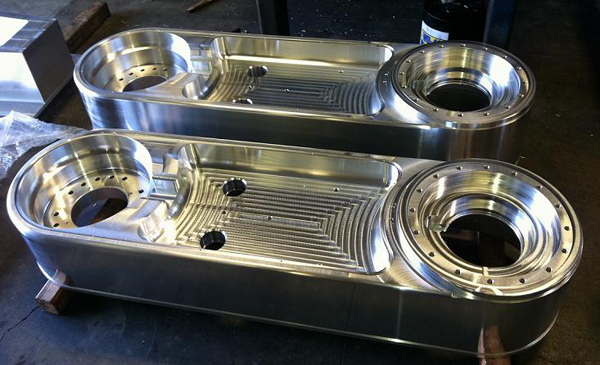
Stainless Steel (316, 303, 304)
Stainless steel comes in numerous grades. Generally, though, it possesses high strength and toughness, wear resistance, and corrosion resistance, and has a shiny appearance like aluminum. Furthermore, it is among the mid-priced metals. However, it is a hard-to-machine CNC material due to its hardness.
316 SS is useful in marine applications, medical equipment, and outdoor enclosures owing to its ability to withstand heat and corrosion. 303 and 314 share similar compositions and are generally cheaper and more machinable than 316. Their main usage includes fasteners (bolts, screws, bushings, etc.), automotive parts, and domestic appliances.
Carbon Steel and Alloy Steel
Carbon steel and related alloys offer excellent strength and machinability, making them ideal for use in many applications. They are also compatible with various heat treatment processes, further enhancing their mechanical properties. Moreover, carbon steel is relatively inexpensive compared to other CNC metals.
However, it’s worth noting that carbon steel and its alloys are not inherently corrosion-resistant, unlike stainless steel or aluminum. Additionally, their rough appearance may not be suitable for aesthetic applications.
Nonetheless, carbon steel and its alloys have numerous practical applications, including mechanical fasteners and structural elements such as beams. Despite their limitations, these materials remain popular choices for many industrial and manufacturing applications due to their strength, affordability, and machinability.
Brass
Brass, known for its excellent machinability, corrosion resistance, and thermal and electrical conductivity, serves as a versatile metal. It also boasts an attractive appearance thanks to its copper content, as well as excellent surface friction properties.
Its properties make it an ideal choice for manufacturing components that require durability and strength while retaining an aesthetic appeal. It has numerous applications in various industries. For instance, manufacturers commonly use it in consumer products, low-strength fasteners, plumbing, and electrical devices.
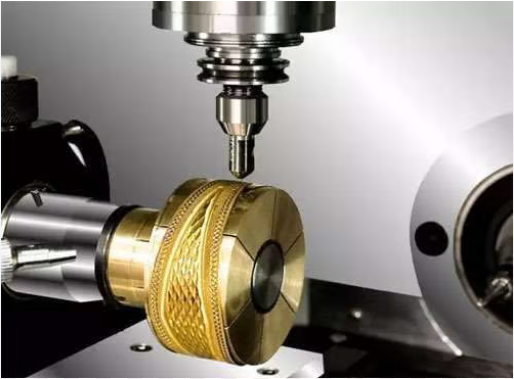
Copper
Copper is renowned for its excellent electrical and thermal conductivity. However, it can be challenging to machine due to its high malleability. This can cause difficulties in generating chips during CNC operations. In addition, copper is prone to corrosion, which can be a concern in certain environments.
Despite these challenges, copper is widely used in various industries, including electrical wiring, magnetic products, and jewelry making. Its excellent conductivity properties make it an ideal choice for electrical and electronic applications, while its malleability and aesthetic appeal make it a popular choice in the jewelry industry.
Titanium
Titanium alloys are known for their exceptional strength-to-weight ratios, making them lightweight and strong simultaneously. They are also corrosion-resistant and have good heat conductivity. Additionally, titanium is biocompatible, so they are suitable for biomedical applications.
However, there are some drawbacks to using titanium. It has poor electrical conductivity and is difficult to machine. Regular HSS or weaker carbide cutters are not suitable for machining it, and it is an expensive material to use in CNC manufacturing.
Even so, titanium is a popular selection, especially for high-performance aerospace parts, military components, and biomedical products such as implants.
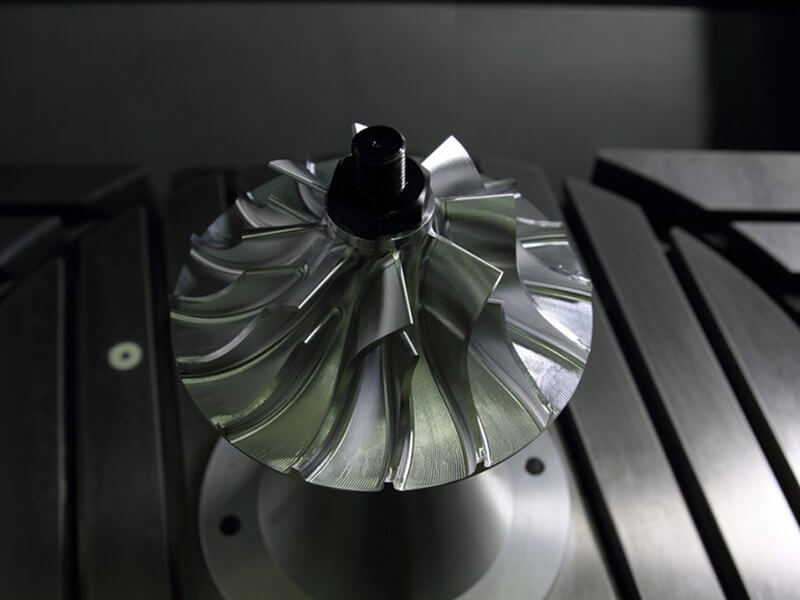
Magnesium
Magnesium is a metal that combines strength with a low weight. Its excellent thermal properties make it ideal for use in high-temperature environments, such as in engines. Its lightweight nature allows for the production of lighter and more fuel-efficient vehicles.
However, the flammability of magnesium also poses safety concerns in certain applications. Additionally, it is not as corrosion-resistant as some other metals, such as aluminum, and can be more expensive to machine.
Plastic CNC Materials
We’ll now discuss CNC plastics. Although most plastic resins are not machinable due to their low rigidity and melting points, we have picked out the small group that has wide-ranging CNC applications.
Acetal (POM)
Acetal is a highly versatile plastic used for CNC machining with a range of desirable properties. It boasts excellent fatigue and impact resistance, decent toughness, and low friction coefficients. Besides, it is highly resistant to moisture, which makes it an excellent choice for use in damp environments.
One of the key advantages of acetal is its rigidity, which makes it easy to machine with great dimensional accuracy. This makes it a popular choice for use in precision components such as bearings, gears, and valves. Due to its excellent mechanical properties and high resistance to environmental factors, Acetal is a dependable choice for various industries, such as automotive, aerospace, and consumer goods.
Acrylic (PMMA)
Acrylic is a commonly used material that can serve as a substitute for glass due to its desirable properties. It has good rigidity and optical clarity, allowing it to be used in applications where see-through surfaces are necessary. Acrylic components offer an attractive and functional alternative to glass, with good optical clarity and a high degree of durability.
While acrylic has some limitations, such as its susceptibility to cracking and thermal softening, it remains a popular material for CNC machining due to its versatility and ease of use. With the ability to create precise, high-quality components, acrylic is an excellent choice for a wide range of applications. Lenses, transparent enclosures, food storage containers, and decorative items are just a few examples.
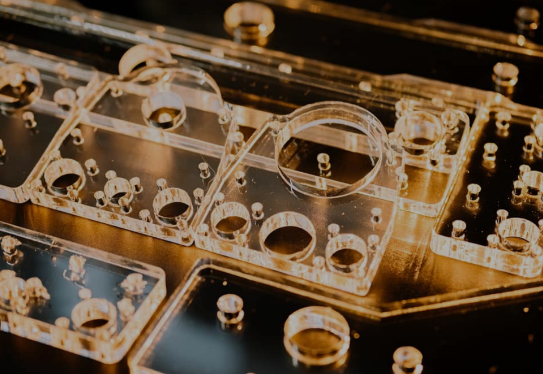
Polycarbonate (PC)
Polycarbonate (PC) is also a popular choice due to its unique set of properties. It is highly transparent, making it an ideal material for use in products that require clarity, such as safety glasses, medical equipment, and electronic displays. Moreover, it has good heat resistance so it’s suitable for use in high-temperature applications.
However, its susceptibility to scratching and lack of UV resistance can limit its use in certain applications. Prolonged exposure to sunlight can cause it to yellow and become brittle. This can limit its use in outdoor applications unless it is modified with UV stabilizers.
One common use of PC is in the production of safety glasses and face shields, where its impact resistance and transparency make it an ideal choice. PC is also used in the production of automotive parts, electronic components, and medical devices.
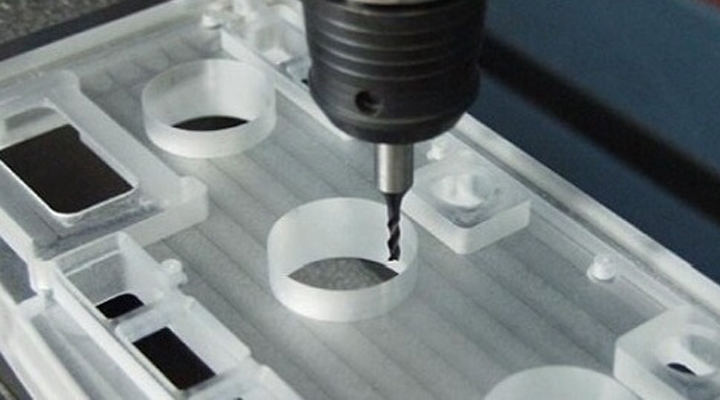
Polypropylene (PP)
Polypropylene is a versatile polymer with numerous benefits, including high chemical resistance and fatigue strength. It is also a medical-grade material, and it produces a smooth surface finish when machining. However, one of its limitations is that it cannot withstand high temperatures, as it tends to soften and gall during cutting, which makes it slightly challenging to machine.
PP remains a popular choice for various applications. Its excellent properties make it suitable for making gear and medical products.
ABS
ABS is a highly cost-effective plastic material that is well-suited for CNC machining due to its excellent machinability, tensile strength, impact resistance, and chemical resistance. Moreover, it can be easily colored, making it ideal for applications where aesthetics are important.
However, ABS is not suitable for use in high-heat environments and is non-biodegradable. Besides, it produces an unpleasant fume when burned, which can be a concern in a CNC shop.
ABS has many applications and is commonly used in 3D printing and injection molding, often with post-processing using CNC machining. It is frequently used to create automotive components and protective enclosures and for rapid prototyping.
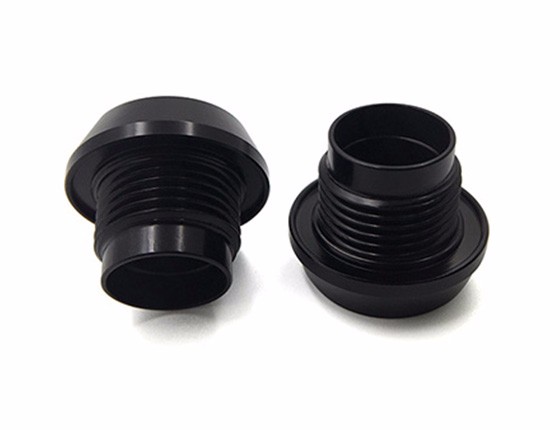
Nylon
Nylon is a versatile material with excellent tensile strength, hardness, and impact resistance. It can be used in a variety of composite forms, such as glass-fiber-reinforced nylon, and has superb surface lubrication capabilities. However, it is not recommended for use in moist environments.
Nylon is particularly well-suited for applications that require protection from frictional forces. This includes components such as gears, sliding surfaces, bearings, and sprockets. With its superior strength and lubrication properties, nylon is a popular choice for many industrial and sports-related products.
UHMW-PE
UHMWPE provides exceptional properties, including high hardness, abrasion and wear resistance, and durability. However, its thermal instability during machining makes it challenging to machine.
Despite its difficulty in machining, UHMWPE is an excellent option for sliding surfaces in bearings, gears, and rollers. Its outstanding properties make it ideal for applications where high wear resistance and durability are required. When machined correctly, UHMWPE can provide excellent performance and a longer lifespan compared to other materials.
Other Materials
CNC machining commonly uses metals and plastics, but it can also work with many other materials, including those listed below.
Foam
Foams are a type of CNC material that is characterized by a solid body with air-filled voids. This unique structure gives foams a recognizable shape and remarkable lightness. Certain high-density foams, such as polyurethane foam and Styrofoam, can be easily machined due to their rigidity, strength, lightweight, and durability.
Foams’ lightweight nature makes them an excellent option for protective packaging. Their versatility in being machined into various shapes and sizes makes them equally useful for creating decorative items. Besides, their insulating properties make them a popular choice for thermal insulation in buildings, refrigeration units, and other applications where temperature control is important.
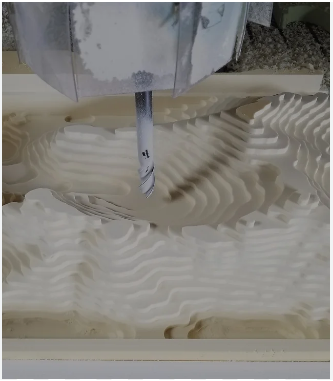
Wood
Wood offers ease of machining, good strength and hardness, and a wide range of available types. In addition, wood is an organic compound and has no negative impact on the environment. Due to its versatility and aesthetic appeal, wood is a popular choice for furniture, home decor, and DIY projects.
However, wood machining generates a large amount of dust, which can pose health risks to workers. Therefore, it’s important for wood machining workshops to have proper swarf management systems in place.
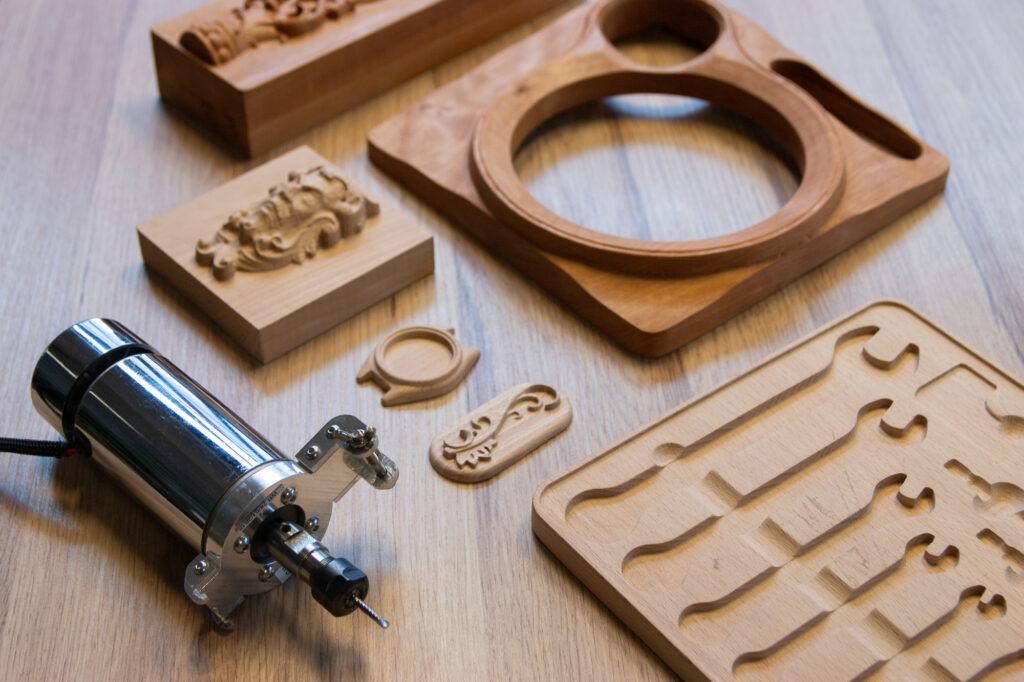
Composites
Composites are made up of two or more constituents that are joined together with a bonding medium. Common composite materials used in CNC machining include carbon fiber, plywood, fiberglass, and others. They have applications in diverse industries, such as automotive, aviation, sports, and medical.
Machining composites can be quite challenging due to several factors. The constituent materials in composites can have different mechanical properties and forms, such as fibers, shards, or plates. What’s more, the bonding medium itself can have unique properties that need to be taken into account during the machining process.
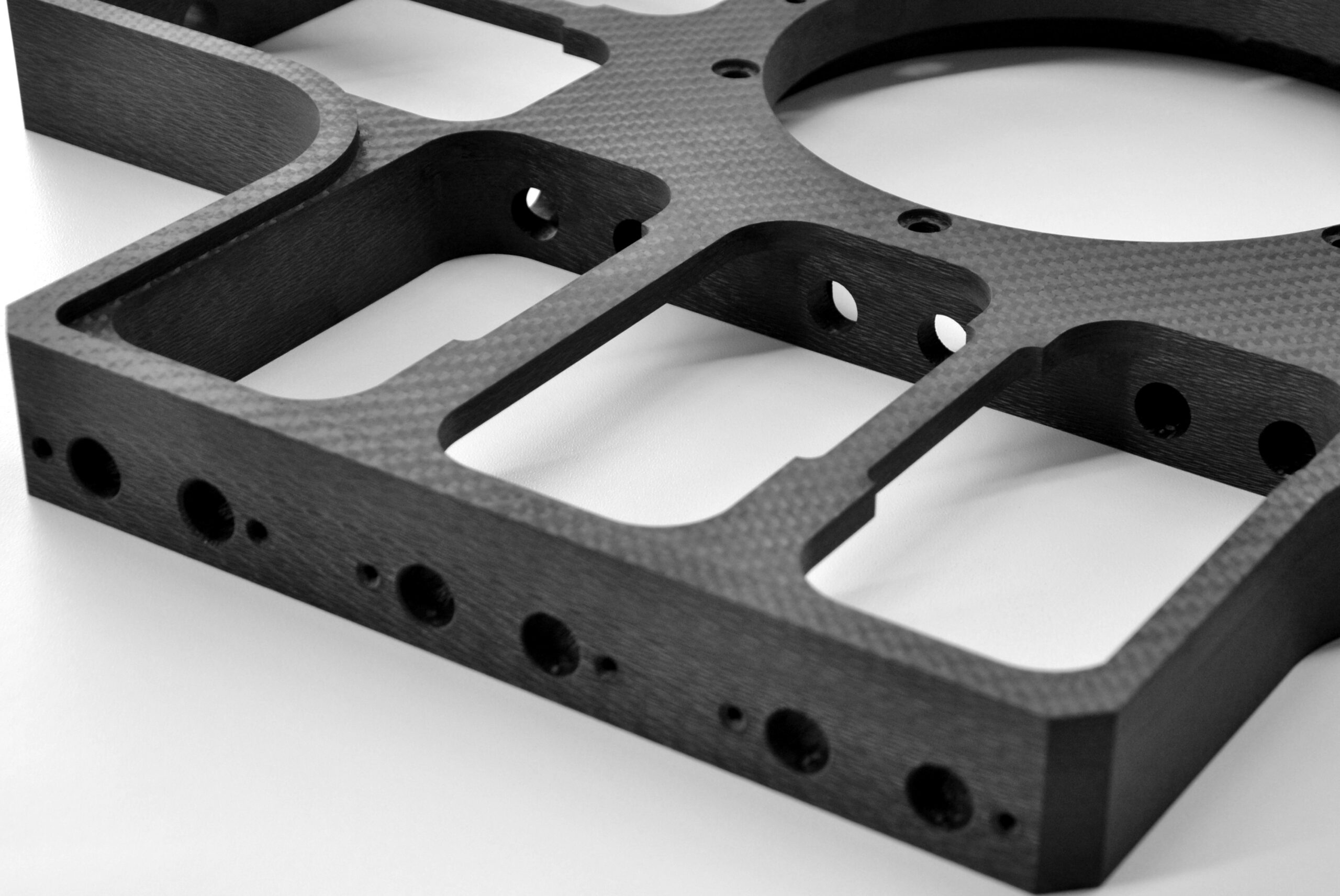
Don’t Forget to Consider Potential CNC Materials
The rich variety of plastics and metals for CNC machining parts causes more confusion than benefit. It is a common issue to overlook potential materials beyond conventional metals and plastics.
To help you look at the bigger picture while Designing for Manufacturing, below is a short list of points to consider before finalizing materials for your project!
- Pick Non-Metallic Materials: There are several instances where non-metallic materials are equal substitutes for metals. Hard plastics like ABS or UHMW-PE are rigid, strong, and durable, for example. Composites such as carbon fiber are also touted as being superior to many best-performing metals.
- Consider Phenolics: Phenolics are a type of cost-effective composite material with high rigidity and surface properties. They are easy to machine and can be cut at incredibly high speeds, saving time and money.
- Know Different Plastics: Being knowledgeable about the full portfolio of plastic CNC machining materials is a must-have skill for designers. CNC plastics are cheap, easy to machine, and come in a diverse range of material properties that cannot be ignored.
- Choose the Right Between Different Foams: Referring to the above section about foams, we would like to stress that it has a lot of potential as a CNC material. Even some CNC machine components are now made from metallic foams! Study different CNC foams to see which one fits your applications best.
Different CNC Machining Projects and Materials, One Source
Design for manufacturing is a crucial aspect of modern industry. As material science has advanced, CNC machining has become increasingly reliant on thoughtful materials selection. At RapidDirect, we specialize in CNC machining services, including CNC milling and turning, and offer an extensive range of materials, from sought-after metals to high-quality plastics. Our 5-axis machining capabilities, combined with our experienced team, allow us to provide unparalleled precision and quality to our customers.
We are dedicated to providing exceptional customer service and are committed to helping our clients reduce costs and achieve their goals. Our technical team is available to assist you in selecting the best materials for your project and can provide expert advice free of charge. Whether you need custom CNC machined parts or have a specific project in mind, we are here to help you every step of the way.
